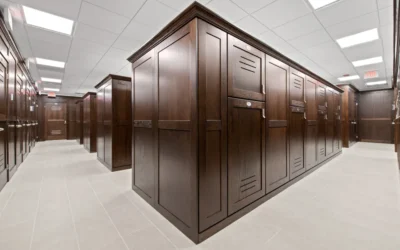Recent data indicates a still-healthy housing market, which should generally bode well for the self-storage industry as it looks toward 2020, although housing affordability and constrained inventory are causes for concern.
The self-storage industry relies on people moving in and out of homes, often targeting new development close to new homes or apartment buildings. A downturn in the housing market could spell trouble for self-storage developers who are in the process of filling up new facilities developed during the recent storage construction boom.
“Certainly we are all fearful of a pending, looming recession at some point; the length of the (economic) cycle has gotten long at 10-plus years,” said Bill Hobin, CEO of the William Warren Group during a webinar hosted by Marcus & Millichap on Nov. 19.
For the self-storage sector, people working, remodeling, buying homes and renting apartments are still driving leasing activity, Hobin said.
“Jobs and consumer confidence drive our leasing transactions,” Hobin said, “so right now the whole country is working and making money and that is fueling leasing in self-storage assets.”
Housing market outlook
Tight housing inventory pushed existing-home prices up 6.2 percent in October, the largest annual increase in home prices since June 2017, according to a report released Nov. 21 by the National Association of Realtors.
As the year winds down, homebuilders showed continued confidence in the market. Housing completions rose over 10 percent in October while starts also increased. If builders continue to add to the nation’s housing supply, more equilibrium could return to the market next year to help satiate strong demand and level out home and rental price increases.
Current low mortgage rates normally bode well for housing affordability but a 3.9- month inventory supply is hurting first-time homebuyers, potentially forcing some to consider older, fixer-upper housing stock or delay home buying altogether. A balanced housing market has about six months supply of homes.
“The issuance of more housing permits is a very positive sign and a good step toward more inventory,” said Lawrence Yun, NAR’s chief economist, citing the latest data for housing starts. “In order to better counter and even slow the increase in housing prices, home builders will have to bring additional homes on the market.”
Apartment rents still rising
On the apartment front, the typical rent is now $1,600 a month, an annual increase of 2.3 percent in October and near yearly highs, according to the October Zillow Real Estate Market report. The nation’s four most expensive large rental markets are in California:
- San Jose ($3,318/month)
- San Francisco ($3,150/month)
- Los Angeles ($2,614/month)
- San Diego ($2,548/month)
Boston rounds out the top five most expensive large rental markets ($2,369/month).
Phoenix (up 6.4 percent annually), Las Vegas (up 5.2 percent) and Charlotte (up 4 percent) were the fastest growing rental markets.
Zillow notes that annual growth in the U.S. rental market has been very consistent over the past year, never slower than 1.7 percent or over 2.4 percent — slower than recent annual income growth of about 3 percent and a sustainable pace for renters trying to save for homeownership.
Shrinking floor plans
Still, with rising home prices and rental rates, demand could rise for smaller homes and smaller apartments and that could also translate into more demand for self-storage space.
Micro apartment units continue to get builders’ attention in high-cost urban markets as one option for addressing the affordability crisis. Austin, Texas, is among the big cities developing micro apartment units. These projects appeal to millennials who want to live in a city such as Austin, Boston or Seattle but can’t afford the rental rates.
As apartments get smaller, valet storage has ramped up in big cities for renters who don’t have room in their tiny flats for their bicycles, kayaks or even out-of-season clothing.
Recessionary rumblings
John Chang, senior vice president of research services at Marcus & Millichap, said the nation’s strong economy and healthy housing market are currently creating a strong environment for self-storage.
The housing market accounts for roughly 3.1 percent of gross domestic product and is a key driver of the economy.
“We’ve had a lot of momentum in the economy,” Chang said. “We’ve got really strong job creation, but there are still some signs out there of recessionary risk that we need to be cognizant of,” Chang said during the recent webcast about the economy and the self-storage market.
Those signs include a temporarily inverted yield curve earlier in 2019. Inverted yield curves (when short-term interest rates are higher than long-term rates) have often, but not always, indicated a recession may be in the offing within the next six to 18 months







